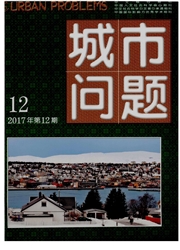

 中文摘要:
中文摘要:
在环境约束趋紧的背景下,选取京津冀、长三角和珠三角35个城市2005—2012年的面板数据,运用SBM—Undesirable模型对环境效率进行测算,应用泰尔指数从区际层面对环境效率差异进行衡量,并运用Tobit回归模型对环境效率的影响因素进行了研究。结果显示,我国三大城市群环境效率平均值的区域分布为:珠三角〉长三角〉京津冀;环境效率区域差异明显,表现为:京津冀〉珠三角〉长三角;区域内差异是区域总差异产生的主要原因;经济发展水平和能源效率对京津冀和长三角城市群环境效率有明显的促进作用;而产业结构对京津冀和珠三角城市群的环境效率有一定的抑制作用;外资依存度仅对珠三角城市群的环境效率有明显抑制作用;而环境治理能力的提高对三大城市群环境效率都有促进作用。
 英文摘要:
英文摘要:
This essay selects the panel data of 35 cities from 2005 to 2012 in Beijing -Tianjin - Hebei Region, the Yangtze River Delta and the Pearl River Delta Areas. Using SBM - Undesirable model, it calculates environmental efficiency, and applying Theil index it measures environmental efficiency difference in the interregional level. And by using Tobit regression model it studies the influential factors of environmental efficiency. The results show that the average efficiency of the Pearl River Delta Area is the highest of all, followed by the Yangtze River Delta Area, Beijing - Tianjin - Hebei Region is the lowest. Regional differences are obvious. The difference of Beijing - Tian- jin - Hebei Region is the biggest of all, followed by the Pearl River Delta Area, and the Yangtze River Delta Area is the smallest. The internal difference of regional efficiency is the main reason that causes the total difference ; In the Beijing - Tianjin - Hebei Region and the Yangtze River Delta Area, the level of economic development and energy efficiency plays positive effect in promoting efficiency; but industrial structure plays negative effect in the Beijing - Tianjin - Hebei Region and the Pearl River Delta Area; Foreign dependency has obvious inhibitory effect on economic growth efficiency only in the Pearl River Delta Area. The improvement of environmental governance capacity playspositive effect in three areas.
 同期刊论文项目
同期刊论文项目
 同项目期刊论文
同项目期刊论文
 期刊信息
期刊信息
